Solar Energy: Advent of China’s green megacity
Also, download this story from the electronic issue here
The concept of megacities is shifting beyond the flux of migration, high-tech architecture and modern urban planning. A model of such a concept is China’s pilot Solar City in Dezhou, pioneered by Himin Group and which fuses Arcadian living and futuristic technologies with energy sustainability, says Angelica Buan in this article.
It is easier to conjure a sustainable megacity cropping up in regions with consistently low green gas emissions. But guess what, a model sustainable megacity has emerged in China, a country tagged as the world’s top greenhouse gas belcher.
China must be an unlikely candidate, being the world’s top producer and consumer of coal. But lately, China has redrawn its roadmap for renewable energy.
According to a report from Ernst & Young, China promised to cap its carbon emissions by 2030 and top up its non-fossil share of energy to 20% during this period. Prior to that, the Central Government drafted the Renewable Energy Law, in 2005, which basically promotes the development and utilisation of renewable energy (solar and wind) via financial and policy incentives.
In a jointly released High Renewable Energy Penetration Scenario and Roadmap Study 2050 by the China National Renewable Energy Centre (CNREC) and other agencies, it reiterates China’s directions towards utilisation of water, wind and solar power. The study shows that it is both technically and economically feasible for renewable energy to cover 60% of China’s primary energy consumption and 85% of electricity consumption by 2050.
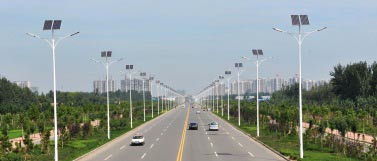
“Through technological breakthroughs, cost reductions as well as the comprehensively deepening of power sector reforms, between 2020 and 2040, wind and solar power will develop rapidly, with an average of annual newly installed capacity of close to 100 million kW,” it noted, further forecasting that “by 2050, 2.4 billion kW of wind power and 2.7 billion kW of solar power will be installed, with a total annual output of 9.66 trillion kWh, which will account for 64% of China’s total power generation and will, thus, become the main power source of the future green electricity system.”
Largest solar panel maker
Translating the renewable energy consciousness into technological innovations, China has succeeded in becoming the world's largest producer of solar panels; and the top market for solar hot water, with almost two-thirds of global capacity, based on 2009 data from United Nations Environment Programme (UNEP).
Progressing over time, China has moved further up to renewable energy leadership. In the latest data by India-headquartered research firm Mondor Intelligence, China installed 12 GW of new photovoltaic (PV) generation capacity in 2013, which is a huge sprint at 232%, compared to the previous year’s data.
In the first quarter of this year, more than 5 GW of solar capacity has been added, and the figure is more than the capacities in the first two quarters of 2014 combined, said Mondor.
Dezhou – pilot city for renewables
Plunging head-on in renewable energy utilisation is the city of Dezhou that encouraged private and public investors and stakeholders to establish renewable energy industries on its premises. Dezhou, a third-tier city, straddles between Beijing-Tianjin Metropolitan Economy Zone and the Jiao Dong Peninsular Coastal Economy Belt, with no harbour or airport but only highways and railways.
The geographic location of Dezhou, however, endows it with an intense total annual solar radiation with approximately 7.3 hours/day of sunlight, thus making it an ideal solar gridiron.
In 1997, the city crafted its development plant for an economic zone, a central hub for solar technology R&D, manufacturing, education and training, and capacity building, according to a report published by the International Renewable Energy Agency (IRENA) and the International Council for Local Environmental Initiatives (ICLEI). The latter also suggested that the city has actively taken the stance as the incubator, i.e., “developing a viable industry cluster”; and a multiplier by “drawing upon the existing local solar business.”
Fulfilling a green dream
The Himin Solar Valley (HSV) project in Dezhou has catapulted the city’s transformation to a green megacity model for wide-scale use of renewable energy, particularly solar energy, that cuts down carbon footprints significantly, yet still lavishing on the cuttingedge amenities modern cities would have.
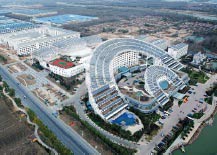
The more than 300 ha solar-powered landscape is a huge solar technology showroom for the Shandong-based Himin Solar Energy Group, the world's largest solar water heater manufacturer and proponent of this US$740 million-budgeted project.
Huang Ming, Chairman of the Himin Group, said that the HSV project has expanded from an R&D centre into what it is now – a sprawling renewable energy prodigy of eco-friendly edifices and facilities equipped with an array of solar technologies ranging from solar heaters and air conditioners, to PV lighting and seawater desalination.
HSV contains nine major centres, including centres for renewable energy manufacturing and logistics, R&D, conference and exchange, education and training, tourism, exhibition centres for low carbon science, solar science and technology, lowcarbon human habitat demonstration centre, and an international business centre.
A pivotal landmark ensconced in the HSV is the Micro-E Sun-Moon Mansion or simply known as the Sun-Moon Mansion, dubbed as the world’s largest solar building with a total area of 75,000 sq m. It also serves as the headquarters of Himin Solar, which posts an annual production capacity of 3 million water heaters, 20 million evacuated tubes, and 500 MW of PV products.
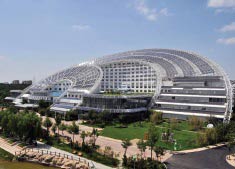
The multi-functional structure can be used for exhibitions, scientific research, offices, conferences, training and hotel, according to the HSV website information. It is integrated with solar hot water providing heating, cooling, and PV technology. In addition, it features thick polystyrene (PS) insulation boards in the roofing and exterior walls, to lower general heat transfer coefficient significantly.
Moreover, fittings including doors, windows, skylights, and glass screens feature lower heat transfer coefficient than the national energy-saving standards, according to reports. Utilisation of solar technology in this structure alone renders an energy-saving rate of up to 88%, said Himin Solar.
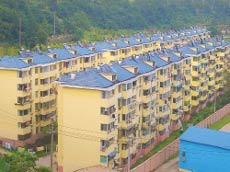
Another major chamber at the HSV is the R&D and test centre. Set up in late 1997, it enables Himin to develop pioneering solar technologies and solar thermal utilisation systems such as the 3-hi tubes series, free welding bracket solar heaters, PV streetlights and automatic coating lines, to cite a few of such technologies, as well as hundreds of innovations annually. It now houses 20 laboratories and is both nationally and internationally recognised by foreign trading companies.
Meanwhile, the Himin Central Research Institute constitutes 14 departments and 30 related offices that focus on four major solar applying fields. It also works with several international science and research units, including Australia's Sydney University, Germany’s Fraunhofer Institute, and Shandong University.
Honing professional expertise for renewables is carried out at HSV’s energy academy. It is the world’s first and only training institution for junior college and technical secondary school trainees in renewable energy industries.
Futuristic homes in HSV
Additionally, Himin has also set up a Solar Utopia Garden, an eco-friendly residential complex, which it claims is a model for “global human habitation for the next 30 years”.
Overlooking the natural Changhe river park with an area of 296 acres, the high-rise residential buildings are surrounded by private landscapes spanning 70,000 sq m, and are equipped with 37 renewable energy technologies and 130 high-tech products, said Himin.
The buildings comprise 300 to 600 sq m flats, with prices ranging from US$1,900 per sq m, according to Himin Solar Energy Real Estate, a subsidiary of Himin.
The buildings are fitted with rooftop solar installations holding vacuum tube collectors, supplying the central heating and cooling systems.
The units’ balconies also have vacuum tube collectors and 300-l tanks for the hot water supply.
Renewables on a wider scale
Himin, who is also a main proponent of China’s Renewable Energy Law, has steered utilisation of solar power in industries, agriculture sector and in homes in such magnitude in line with the company’s new wave sustainable strategies: Green Energy Substitution and Clean Energy New Village.
In 2010, Himin also raised the concept of “Micro-Emission Earth” at the fourth session of the International Solar Cities Congress held in Dezhou.
According to Himin’s Huang, he has periodic projections of renewable energy substitution via three timetables: the “recent substitution” will see 25% of conventional energy consumption replaced by renewable energy, including 12% solar energy, by 2020.
In the second “metaphase substitution”, renewable energy substitution will increase to 55%, including 25% solar energy, by 2040; and in the third “future substitution”, about 90% of conventional energy will be replaced with renewable energy, including 50% solar energy, by 2060.
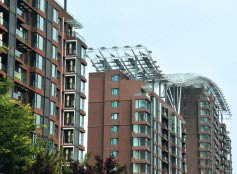
A natural visionary, Huang revealed that his concept of the Solar Valley was spurred with the birth of his daughter and when he began to think about how the future would be like for the next generation if humans continue to maim the earth’s resources and pristineness.
Of his vision, he said that he dreams of the day when “the solar industry will be as advanced as the IT industry, and as mature as the electric home appliances industry, and as large-scaled and automated as the automobile industry.”
At the rate things are going for China’s renewable energy sector, that day may have arrived.
(PRA)Copyright (c) 2015 www.plasticsandrubberasia.com. All rights reserved.










































